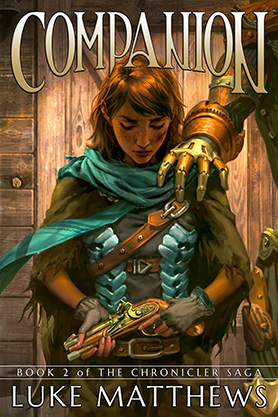Story by Kurtis Wiebe
Art by Riley Rossmo
I’ll be the first to admit that I don’t get Green Wake. From the very start I’ve been confused by Wiebe’s noir(ish) murder mystery, because he layers his world with so much pretentious existentialism that I have trouble understanding what, exactly, I’m supposed to care about. The latest issue doesn’t help matters, opening up more threads than it closes and not really hinting toward a real resolution.
We are given several insights into detective Morley’s life before, both via flashbacks and an impenetrable conversation with a priest named Ishum, and we follow murder-suspect Ariel as she flees from Morley’s pursuit and into the presence of a town prophet who claims to have the key to escaping Green Wake. Woven into these plotlines is some sort of wraith creature whose appearance we are told “will not make sense”, random appearances by other half-human creatures, and a vision of some behemoth corpse-toad.
It doesn’t help that I’m not nearly as enamored with Riley Rossmo’s art as others seem to be. While his sketchy style may be a perfect compliment to Wiebe’s haphazard scripting, I’m left feeling only that there could be some beautiful art buried beneath all those needless scribbles. His tendency to add impact with shocks of color might work for some, but here it feels as though it’s being used to distract the reader from otherwise muddled artwork.
And after all of that, I’m still not sure of the point of it all. I feel like there are interesting nuggets to be sifted from Green Wake, but Wiebe has neither given me the tools to do so, nor the hooks to make me want to.


